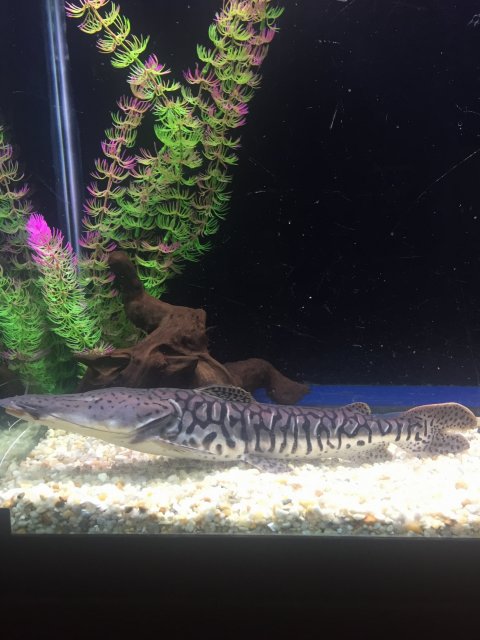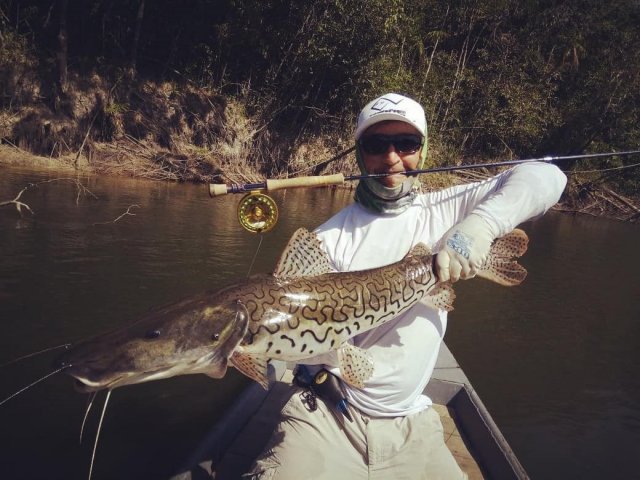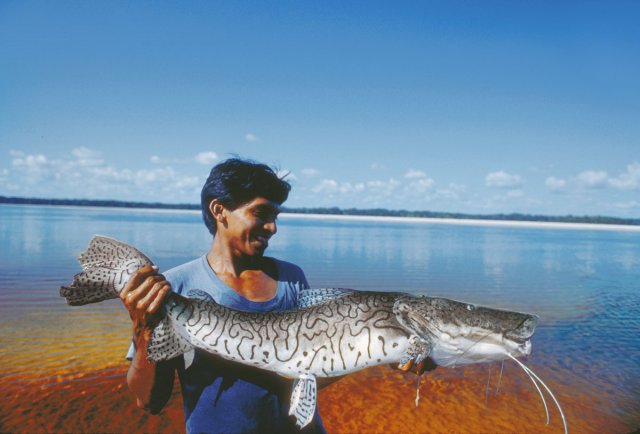Thanks to Dr. H. H. Ng for bringing this up to our attention.
Useful and interesting info that goes to show what @wednesday13 has been telling us a while - we may get hybrids where we think we get genuine species... and more:
@wednesday13 has been telling us a while - we may get hybrids where we think we get genuine species... and more:
Molecular identification of intergenus crosses involving catfish hybrids: risks for aquaculture production
Diogo T. Hashimoto1 , Fernanda D. Prado2 , Fausto Foresti3 and Fábio Porto-Foresti2
http://www.scielo.br/pdf/ni/v14n2/1982-0224-ni-14-02-e150139.pdf
Monitoring of the interspecific hybrid production and trade is essential for the appropriate management of these animals in fish farms. The identification of catfish hybrids by morphological analysis is unreliable, particularly of juveniles and post-F1 individuals. Therefore, in the present study, we used five molecular markers (four nuclear genes and one mitochondrial gene) to detect hybrids in the trade of pimelodid juvenile fish from different stocks purchased of five seed producers in Brazil.
Samples commercialized as pintado (pure species Pseudoplatystoma corruscans) from three fish farms were genetically identified as hybrid cachapinta (♀ P. reticulatum x ♂ P. corruscans).
In the stocks purchased as cachandiá (hybrid between ♀ P. reticulatum x ♂ Leiarius marmoratus) and cachapira (hybrid between ♀ P. reticulatum x ♂ Phractocephalus hemioliopterus), we suggested the occurrence of intergenus crosses involving the hybrid cachapinta, which was used instead of the pure species P. reticulatum.
The problems involving the hybrid cachapinta production were discussed in the present study, especially because these animals have caused genetic contamination and threatened the genetic integrity of natural and cultivated populations.
In order to improve the surveillance of the production and provide criteria for the correct management of catfish hybrids, genetic markers has become an excellent alternative to the morphological identification, including juveniles or post-F1 generations.
Useful and interesting info that goes to show what
Molecular identification of intergenus crosses involving catfish hybrids: risks for aquaculture production
Diogo T. Hashimoto1 , Fernanda D. Prado2 , Fausto Foresti3 and Fábio Porto-Foresti2
http://www.scielo.br/pdf/ni/v14n2/1982-0224-ni-14-02-e150139.pdf
Monitoring of the interspecific hybrid production and trade is essential for the appropriate management of these animals in fish farms. The identification of catfish hybrids by morphological analysis is unreliable, particularly of juveniles and post-F1 individuals. Therefore, in the present study, we used five molecular markers (four nuclear genes and one mitochondrial gene) to detect hybrids in the trade of pimelodid juvenile fish from different stocks purchased of five seed producers in Brazil.
Samples commercialized as pintado (pure species Pseudoplatystoma corruscans) from three fish farms were genetically identified as hybrid cachapinta (♀ P. reticulatum x ♂ P. corruscans).
In the stocks purchased as cachandiá (hybrid between ♀ P. reticulatum x ♂ Leiarius marmoratus) and cachapira (hybrid between ♀ P. reticulatum x ♂ Phractocephalus hemioliopterus), we suggested the occurrence of intergenus crosses involving the hybrid cachapinta, which was used instead of the pure species P. reticulatum.
The problems involving the hybrid cachapinta production were discussed in the present study, especially because these animals have caused genetic contamination and threatened the genetic integrity of natural and cultivated populations.
In order to improve the surveillance of the production and provide criteria for the correct management of catfish hybrids, genetic markers has become an excellent alternative to the morphological identification, including juveniles or post-F1 generations.





